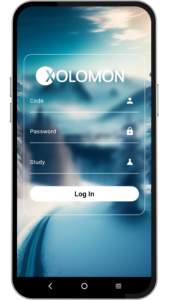
Training your team for eCRF success
Implementing an electronic Case Report Form (eCRF) system is a pivotal step in modernising clinical trial operations. But no matter how powerful your eCRF platform is, its success depends largely on the people using it. For sponsors and CROs alike, team training is not a box-ticking exercise, it’s the key
Lo más leído

Tecnología al servicio de la investigación: el estudio Hemi-D-TREND confía en Xolomon

When to start using digital tools in your clinical trial timeline

ePRO in long-term trials: designing for patient fatigue
No te pierdas lo último de Xolomon

Training your team for eCRF success
Implementing an electronic Case Report Form (eCRF) system is a pivotal step in modernising clinical trial operations. But no matter how powerful your eCRF platform is, its success depends largely on the people using it. For sponsors and CROs alike, team training is not a box-ticking exercise, it’s the key to data quality, compliance, and trial efficiency. Why training matters

Pharmacovigilance in clinical trials: how Xolomon supports safer, smarter studies
In clinical trials, patient safety isn’t just a regulatory checkbox; it’s the backbone of every protocol. Whether you’re running a single-site study or coordinating a multi-country trial, tracking adverse events and unexpected reactions with precision is critical. Pharmacovigilance teams rely on consistent, complete, and timely data to detect safety signals. But too often, safety reporting is siloed from core trial

Tecnología al servicio de la investigación: el estudio Hemi-D-TREND confía en Xolomon
Nos enorgullece formar parte del reciente estudio Hemi-D-TREND, publicado en Surgical Endoscopy, que pone el foco en una pregunta clave: ¿cuál es el momento ideal para entrenar a cirujanos en técnicas laparoscópicas avanzadas? Liderado por un equipo de investigación internacional y multicéntrico, el estudio comparó los resultados de hemihepatectomías laparoscópicas realizadas por cirujanos aún en formación frente a cirujanos ya

Technology adoption for non-tech sites: bridging the gap in digital trials
Not every site is digital-ready, but your technology should be As clinical trials become more complex and regulated, the expectation for digital adoption grows. Tools like eCRD, CTMS, and ePRO are no longer optional, they’re essential. But while the industry pushes for standardisation, not every site is equally prepared for this shift. Smaller or less tech-experienced research sites often struggle



